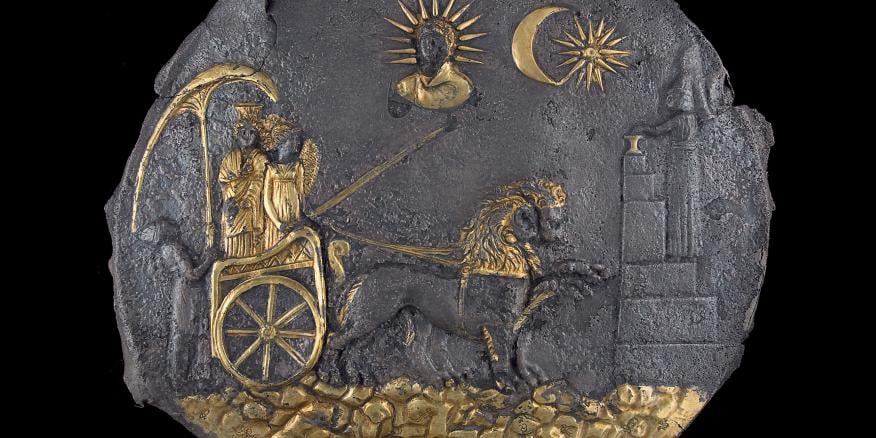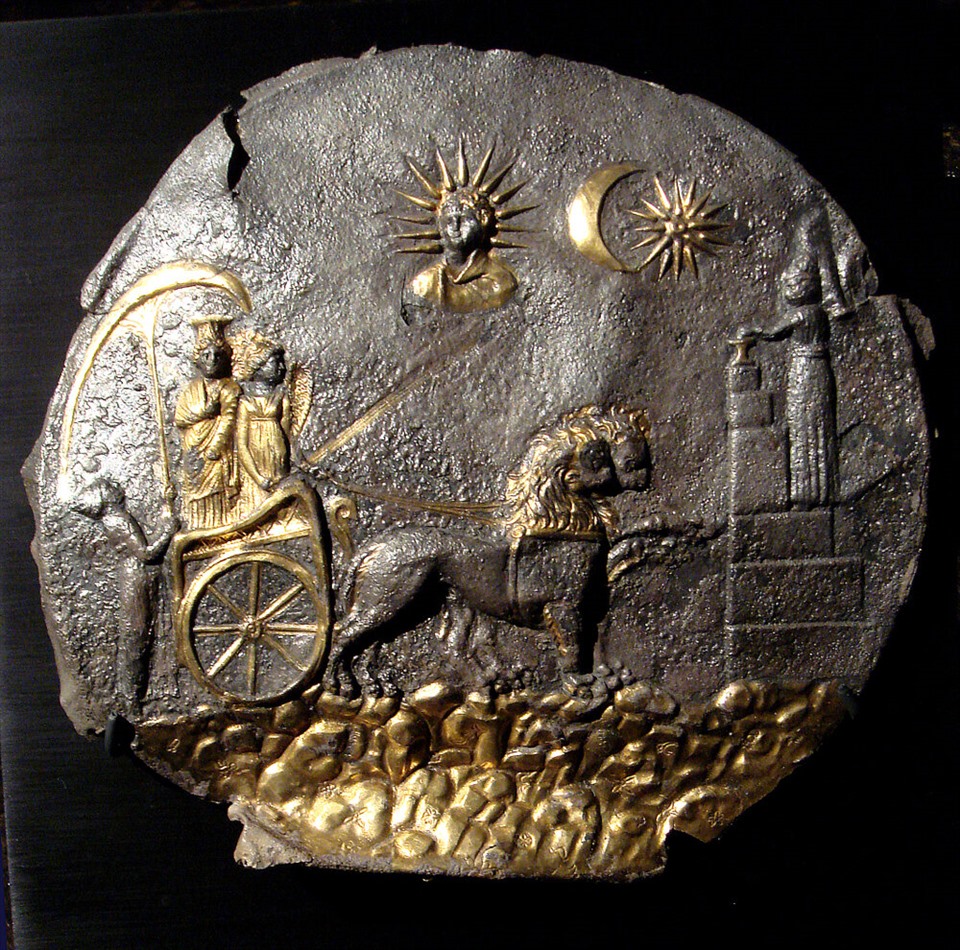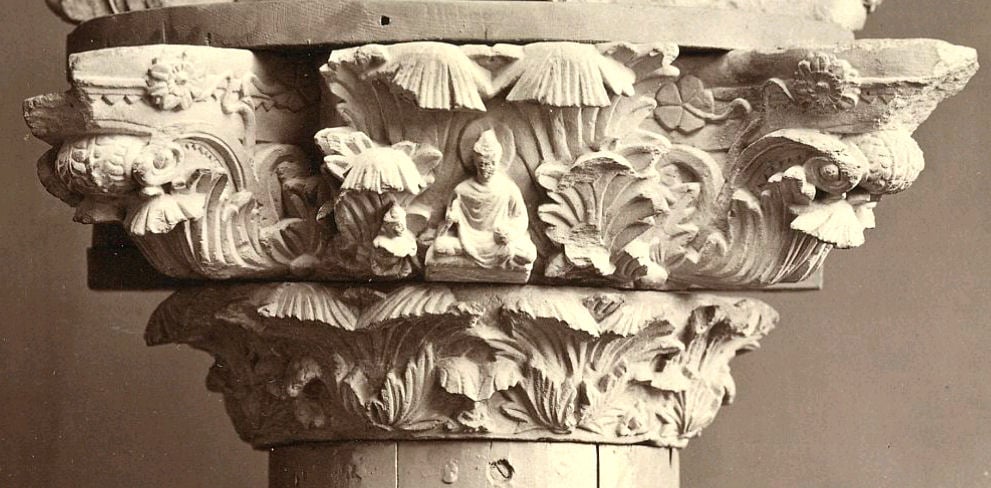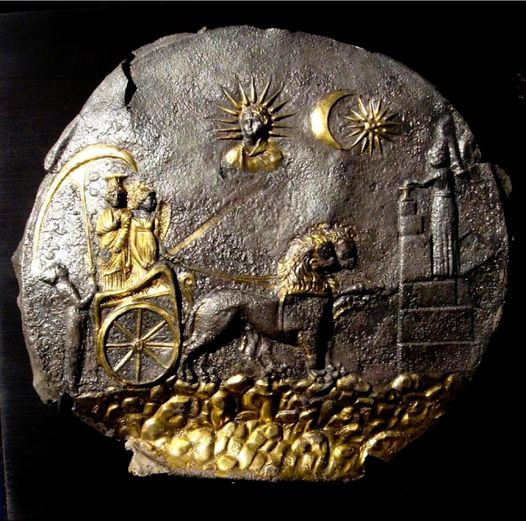Nestled in northern Afghanistan, the ancient city of Ai-Khanoum stands as a testament to the rich cultural tapestry of the Greco-Bactrian Kingdom. Flourishing between the 4th and 2nd centuries BC, Ai-Khanoum was a vibrant hub where Greek traditions seamlessly merged with local Bactrian and Persian influences. Excavations at this remarkable site have unveiled a treasure trove of artifacts, shedding light on the city’s historical and cultural significance. Among these discoveries, a 2nd-century BC disk stands out, offering a fascinating glimpse into the artistic fusion that defined Ai-Khanoum.
The Significance of Ai-Khanoum
Ai-Khanoum, often referred to as the “Alexandria on the Oxus,” was one of the easternmost cities founded by the successors of Alexander the Great. This strategic location along the Oxus River (modern-day Amu Darya) made it a critical nexus for trade, culture, and political power. The city became a melting pot of Greek, Bactrian, and Persian cultures, fostering a unique blend of artistic and architectural styles.

The Discovery of the Disk
Among the many artifacts unearthed at Ai-Khanoum, the discovery of a 2nd-century BC disk stands out for its intricate depiction of various deities and its embodiment of the city’s multicultural essence. This disk portrays Cybele, the Anatolian goddess of nature, Nike, the winged goddess of Victory, and Helios, the sun god, in a chariot drawn by lions. This amalgamation of Greek and Near Eastern artistic styles provides a vivid illustration of the cultural synthesis that characterized Ai-Khanoum.
The Dpictions on the Disk

The disk is a masterpiece of ancient art, showcasing the confluence of diverse mythological themes and artistic traditions:
– Cybele in a Chariot: The central figure of Cybele, an Anatolian goddess, symbolizes nature and fertility. Depicted in a chariot, she embodies the nurturing aspect of the natural world, a theme prevalent in many ancient cultures.
– Nike, the Winged Goddess of Victory: Accompanying Cybele is Nike, the Greek goddess of victory, symbolizing triumph and success. Nike’s presence highlights the influence of Greek mythology and its integration into the local cultural framework.
– Helios, the Sun God: The sun god Helios is depicted with a radiant halo, driving a chariot drawn by lions. This imagery underscores the reverence for celestial bodies and the significance of the sun in ancient religious beliefs.
– Mountainous Terrain and Celestial Symbols: The backdrop of the disk features a mountainous landscape and celestial symbols, reflecting the importance of natural and cosmic elements in ancient art and mythology.
The Artistic Fusion
The intricate details and stylistic elements of the disk exemplify the artistic fusion that flourished in Ai-Khanoum. Greek artistic traditions, characterized by realistic portrayals and dynamic compositions, are seamlessly integrated with Near Eastern motifs and symbolism. This fusion not only highlights the city’s role as a cultural crossroads but also underscores the broader exchange of ideas and artistic techniques during the Hellenistic period.
Ai-Khanoum’s Cultural Legacy

The artifacts and architectural remains of Ai-Khanoum provide invaluable insights into the city’s role as a beacon of cultural and intellectual exchange. The presence of Greek-style theaters, gymnasiums, and temples alongside Bactrian and Persian influences illustrates the city’s cosmopolitan nature. Ai-Khanoum was not just a political and economic center but also a hub of learning and artistic expression.
Conclusion
The discovery of the 2nd-century BC disk at Ai-Khanoum is a captivating reminder of the city’s historical and cultural significance. Through its intricate depiction of Cybele, Nike, and Helios, the disk encapsulates the rich tapestry of influences that defined Ai-Khanoum. As we continue to unearth and study the remnants of this ancient city, we gain a deeper appreciation for the interconnectedness of ancient civilizations and the enduring legacy of their artistic and cultural achievements. Ai-Khanoum stands as a testament to the power of cultural fusion and the timeless allure of human creativity.
